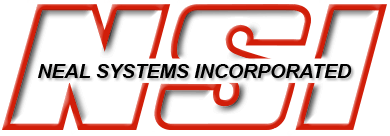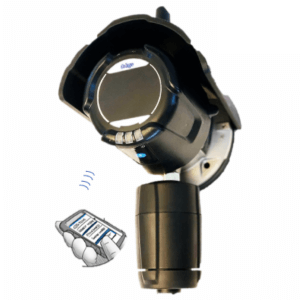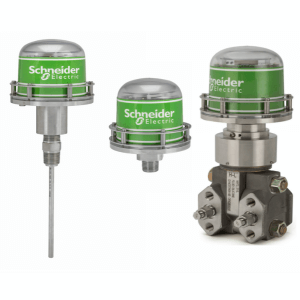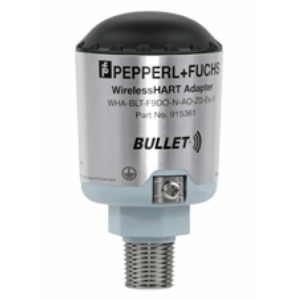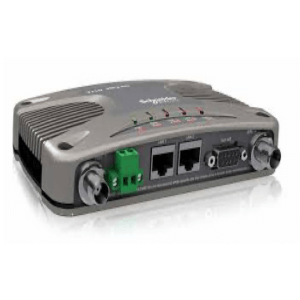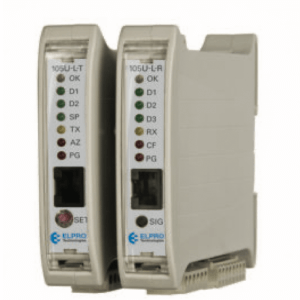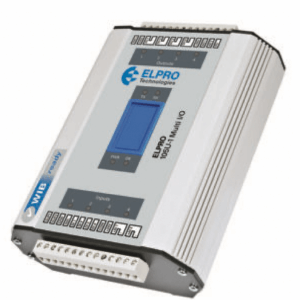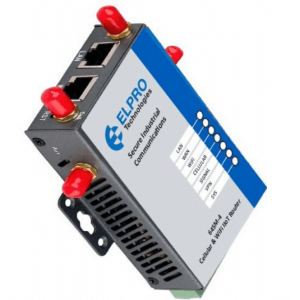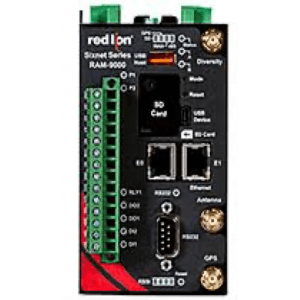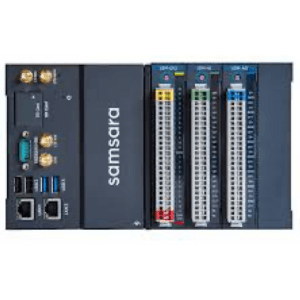An Introduction to Wireless Solutions
What Does Wireless Actually Mean?
Wireless really refers to any signal that is transmitted through the air. That can be sight, sound, X-rays, or radio waves. Radio waves are of special interest to Neal Systems and can be seen on the left-hand side of the spectrum shown below.

The Categories of Wireless
The highlighted portion, very high and ultra high frequencies are the frequencies that are the main focus of industry.
Within these frequencies are things like 900MHz, 2.4GHz Wifi, Bluetooth, wireless HART, 4G cell modems and licensed radios like those provided by Elpro.
One thing to notice is that the higher the frequency band the more space is available. So for example: The Very High Frequency band (30 to 300 Mega Hertz) there is 270MHz available. In the Extremely High Frequency band (30 to 300 Giga Hertz) there is 270 Giga Hertz available. This is 1000 times the amount of bandwidth.

Why don’t we just put everything into these very high frequencies since there’s plenty of room and they allow for fast communications?
Whilst higher frequency does in fact equal more bandwidth and higher speed, it also equals lower range. This is because the higher the frequency, the easier the wave is absorbed by anything including trees, walls, people and at high enough frequencies even gases in the atmosphere. In fact, one of the major issues with 5G is the requirement for significantly more antennas, since at the higher frequencies the signals are much more easily attenuated.
Words, Phrases, and Acronyms in Wireless
4G, 5G, 6G: Fourth, fifth and sixth generation of cell networks
AWS: Amazon Web Services (Amazons cloud offering)
Azure: Microsoft’s equivalent cloud offering
BLE: Low energy Bluetooth; operates in the 2.40 to 2.48GHz band and uses 1/10th the energy of standard BT
Blacklisting: A security method to restrict specifically listed nodes
The Cloud: The conglomeration of servers around the world that hold Google, One Drive, and iCloud data etc.
Colinnear: Antenna that radiates equally in all directions (in a single plane)
DNP3: A more robust version of Modbus favored by TRSS and used extensively in power and water industries
dB (dBi or dBm): A dimensionless power ratio, typically used for signal to noise
dBm: Power as referenced to 1 watt
dBi: Forward gain of an antenna compared to a hypothetical isotropic antenna
Encryption: A security method whereby data is encoded prior to being sent and then decoded at the other end so that capture during the transmission does not reveal the contents of the packets
Edge Device: Any device that sits at the edge of one network and provides connection to another – e.g. router
Ethernet IP: An industrial protocol running on Ethernet favored by Rockwell
Frequency Hopping: Used with spread spectrum above; describes how the frequency is constantly being changed
IOT: Internet of things
IIOT: Industrial Internet of things
Isotropic Antenna: Theoretical 1dB antenna with 100% efficiency and circular radiation pattern
Mesh Network: A network that dynamically switches its route to maximize transmission efficiency
Modbus TCP: An industrial protocol running on Ethernet that is the most commonly used of all protocols
Modbus RTU: A serial version of Modbus TCP but still widely supported and easy to use
MQTT: A low overhead, secure and popular protocol for getting data to the cloud
mWatt / Watt: Measurement of power, 1 watt = 1,000 milli Watts = 30DBm
Profinet: An industrial protocol running on Ethernet favored by Siemens
Spread Spectrum: Signal is spread out over several frequency bands (reduces interference and increases security)
Whip: Low gain antenna
Whitelisting: A security method to restrict access to only those nodes listed
Yagi: Antenna that is concentrated in one direction
Antennas
Collinear Antenna
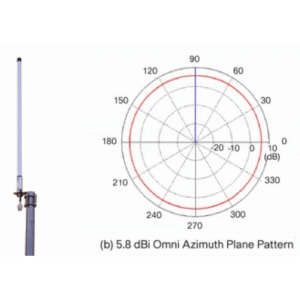
The Collinear antenna, shown on the far left and has a transmission pattern of the graph in the middle, at least in the horizontal plane.
These antennas are sometimes known as Omnidirectional antennas.
Yagi Antenna

The Yagi antenna, shown on the far left and has a transmission pattern of the graph on in the middle, again, for the horizontal plane.
These antennas are sometimes known as directional antennas.
The more the cross pieces, the larger the gain.
Whip Antenna

The whip antenna, which looks like this and can be purchased with magnetic mounts. They are flexible, small, low cost and are typically low gain antennas in the 0 to 3 dB range. They have a similar transmission pattern as collinear antennas.
Licensed vs Unlicensed
- The requirement to have a license!
- The maximum emitted power – 1 watt for unlicensed, 5 watts + for licensed
- The frequencies that are used e.g. unlicensed is allowed a band between 902 and 928 MHz, for licensed 148-174 MHz, 340–400 MHz, 400–480 MHz and 470–520 MHz
Fresnel Zone – Out of Phase Reflections
Objects in the Fresnel zone can cause ‘out of phase’ reflections to arrive at the receiving unit. The maximum radius of the Fresnel zone is F1 with the calculation shown below.

F1 =36.03 x Sqrt(d/f), where F1 is the maximum radius of the first Fresnel zone in feet; d is the distance between the two antennas, in miles; f is the radio frequency in GHz.

Fresnel zone – Example Disruptions

Each of the examples to the left, demonstrate how obstructions can protrude into the Fresnel zone and cause ‘out of phase’ reflections to reduce the received signal. The most interesting one is the top one, which demonstrates how, despite line of site clearance, the ground can actually cause disruptive reflections.
Neal Systems Wireless Products
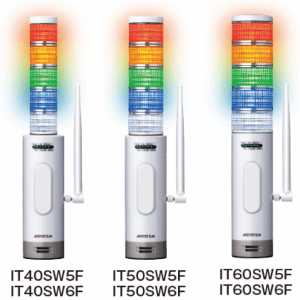
M-System Wireless Stacklights
- License free 900MHz multi-hop technology (see picture below)
- Bright and even illumination thanks to M-System’s triple reflection system
- Upto Five colors (red, amber, green, blue and white) can be freely combined
- Modbus TCP communications to the parent
Draeger Centralized Worker Safety – X-AM 8000
- Bluetooth connection to cell phone for transmission to the cloud
- Hose connection available for up to 150’ in length
- Support for up to 7 gases simultaneously
- Alarm via color LED’s + 100dB (at 30’) horn + vibration
- Wireless charging
Draeger Polytron 6100 EC WL Gas Detector
- Battery Lifetime up to 24 months
- Supports all DragerSensors (EC)
- Ex approval: Zone 0,1, and 2
- ISA 100.11a communication – One system architecture
- SIL 2 capable
- Bluetooth as service interface with 15 meter range
- Tablet or PC as GUI – Windows 10, Polysoft 1.8
- Intrinsically safe design for hassle free sensor and battery exchange
- Data logger already built in
- Extended antenna option (5, 10 & 20m)
- Local power option (24vdc)
- Option without sensor compartment as repeater
- Weather Protection / Sunshield
Draeger GS01 Hydrocarbon Detector
- Equipped with dual sensor technology
- Ultrasonic
- Improvised IR sensor with Single Beam Triple Wavelength principle
- Battery Life: Up to 2 years
- Intrinsically safe field replaceable battery pack
- Factory set “lifetime” calibration
- Fast response (T90: 5 Seconds)
- SIL2, capable
- SIL2: PROFINET
- Non-SIL: Modbus TCP or RTU
- ISA 100 interoperability
Accutech (Foxboro) Wireless Field Devices
- DP20 wireless differential pressure unit
- FL10 wireless float level unit
- GL10 wireless gauge level unit
- GP10 wireless gauge pressure unit
- RT10 wireless RTD unit
- SI10 wireless switch input unit
- SL10 wireless submersible level unit
- TC10 wireless thermocouple unit
- TM10 wireless turbine meter totalizer unit
- VC10 wireless valve controller unit
Industrial Automation and Wireless Sensor Networks (Foxboro)
- Pressure
- Differential Pressure
- Temperature
- 10 Year Battery Life on Transmitters
- 5 Year Battery Life on Concentrators
- Optimized data paths in the WirelessHART mesh network
Pepperl & Fuchs Wireless HART Adapter
- Installation in Zone 1, 21
- Installation in Class I, II, Division 1
- Installation in Class III
- Ex d housing for Ex d field devices
- Cast aluminum housing
- Loop powered
- Direct mounting on HART or 4 mA … 20 mA field device
- Encapsulated antenna
- Up to 8 field devices in multidrop
Trio Radios (Foxboro)
Unlicensed:
- Serial (K series) or Ethernet (J series) communications over 900MHz or 2.4GHz.
Licensed:
- Q series UHF Frequency Band Operation : 135-175MHz, 400-450MHz and 450-518MHz for serial or Ethernet
- M series 395-470 MHz or 450-520 MHz for serial communications
Elpro Radios – 905U-L
- Flexible usage: pre-configured matched transmitter/ receiver pair; individual use for transmission/ receiving I/O from other devices.
- Peer-to-peer communications with exception reporting, self-checking of messages via update time and secure data encryption.
- Multi-hop repeatability of signals when used with multi-I/O and gateway units.
- Up to 3000 wireless units per network.
- Class I Div 2 hazardous area approval (USA/Canada)
Elpro Radios – 905U-K
- Battery powered
- Analog or digital I/O
- Transmitter power supply
- Integrates to other 905U devices such as the -1 or -G
Elpro Radios – 905U-1
- 1W RF power
- Link I/O inputs to single or multiple I/O outputs
- Link I/O points to Industrial protocols such as DH+, Modbus TCP, Profibus or Ethernet IP
- Reliable point–to–multi-point two-way communications combining exception reporting, self-checking and data encryption
- Multi-hop repeater function provides increased communication distance
- Multiple I/O channels for monitoring and controlling field devices with set-point, pulse count, and rate available. Additional internal I/O points provided for health monitoring
- Communication failure notification and diagnostics, including radio path measurement, communications logging, and verification of I/O values
- Built-in low voltage AC/DC/battery power options, UPS battery charger and solar regulator
Elpro Radios – 915U-2
- 900MHz license free mesh networking radio
- Built in analog and digital I/O
- Native Modbus TCP support
- Long distance available by using 915U-2 as repeaters
Elpro Licensed Radios – 415U-E
- Exceeding 140 kbps data throughput
- Secure data protection with WPA and AES256 encryption
- ProMesh automatic path selection and network formation
- Supports multiple data rates simultaneously for high performance over short and long communication links
- Redundancy modes for base, repeater, and remote
- Wireless point-to-point or multipoint I/O and gateway functionality
- Native support for Modbus TCP, RTU and DNP3
- Full L2/L3 network support
- 148 – 174MHz, 340–520MHz Model Options
- 10 mW to 10 W RF power configurable
- Over-the-air network diagnostics and configuration
Elpro 645M-4 Cell Modem
- 3G/4G/LTE Connectivity
- Compact design for easy integration into machines or electrical cabinets
- SMS to control router online/offline, reboot, status, IO alarm, WiFi state
- Integrated RS232 Serial Server
- LAN/WAN Fallback for redundant networks
- WiFi for remote hotspot and mobile applications
- IPSec & OpenVPN Client & Server, L2TP, PPTP
- GRE, Port Forward, DMZ
- Enhanced security for both cyber and data transmission
- 2 x 10/100M LAN / WAN Ports
- 5-40VDC input range with -40 to +85degC operating temp
Red Lion RAM6000 and RAM 9000 Cell Modems
- Natively supports Modbus, DNP3 and MQTT protocols
- Built in digital and analog I/O
- Up to five ethernet ports
- One RS-232 serial port supporting serial-to-IP conversion
- Multi-carrier support with the ability to change cellular carrier networks via software selection
- SMS Control for enabling VPN service for on-demand, secure communication
Samsara IG21
- Built in I/O – 4 AI, 2 AO and 6 DIO
- Serial support for Modbus RTU
- Ethernet support for Modbus TCP, Ethernet IP, MQTT and OPC UA
- Bluetooth support for temp, humidity, vibration and power sensors
- 256 AES end to end encryption
- Two factor authentication login available
- Designed for mobile platforms
- Unlimited users
- On demand and scheduled reporting
- Voice, email and text alarming
Samsara IG61
- Expandable I/O up-to 32AI / 32 DI
- Serial support for Modbus RTU
- Ethernet support for Modbus TCP, Ethernet IP, MQTT and OPC UA
- Bluetooth support for temp, humidity, vibration and power sensors
- 256 AES end to end encryption
- Two factor authentication login available
- Designed for mobile platforms
- Unlimited users
- On demand and scheduled reporting
- Voice, email and text alarming
